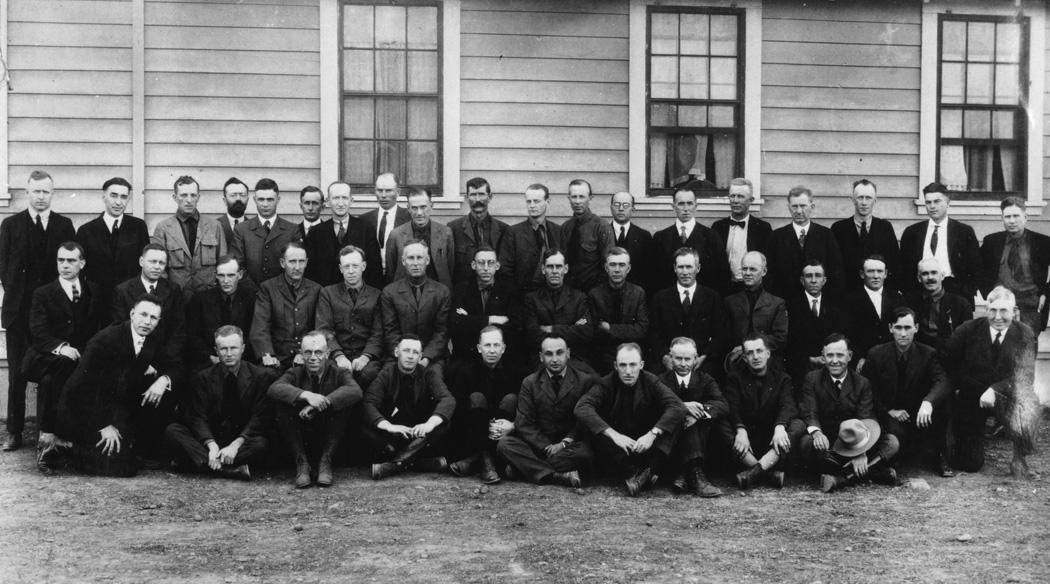November 14, 1921: First-ever National Fire Control Conference held
On this date in 1921, the U.S. Forest Service convened the first national conference on fire control at Mather Air Field near Sacramento, California. Virtually all the agency’s leaders and brightest minds came together for the conference, including six district (now regional) foresters and six forest supervisors, numerous Washington office people including Chief William Greeley, and others of various ranks. Leaders in fire research and policy such as S. B. Show, E. I. Kotok, Evan Kelley, and William Osborne attended, as did Aldo Leopold and future chief Lyle Watts. All seven districts were represented.
The two-week long conference, the first national conference held by the U.S. Forest Service on any topic, was organized to address the controversy surrounding the issue of allowing light burning on federal lands. California was chosen as the host site because that district was a leader in the development of fire control theory and practice, and because many of the problems there could be found throughout the country.
A major outcome of the conference was settlement of the debate between those favoring “let burn” and light burning and those like Greeley and Show who believed in aggressively attacking all fires. Policies varied from district to district and even forest to forest. The agency found itself in a quandary because it was letting some light burning occur on lands adjacent to national forests but demanded that fires on federal land be fought. Agency leaders felt that this contradiction undermined its authority and wanted to formulate a national standard. The debate over what to do had been raging for more than a decade and had become important enough to prompt a national conference on the topic. Greeley’s position was clear; in an article a short time before, he had derisively dismissed the use of light burning as “Piute burning.”
Not surprisingly Chief Greeley decided in favor of attack and control. The agency set forest fire control as a priority over other activities, established national forest fire control standards, and provided for cooperation in forest fire control between districts. This new attitude towards fire control is best exemplified by the “10 a.m. policy,” under which the Forest Service decreed that all fires on federal land would be attacked as quickly as possible and fought until extinguished. The Forest Service is still dealing with the fallout of that decision ninety years later because the resulting fuel buildups continue to create problems for fire control personnel and forest managers.
For Greeley, the outcome of the conference gave him the opportunity to shape agency policy as he had long hoped. As the district ranger in Montana during the 1910 fires, he had come away from that disaster convinced of the need for cooperative fire control and the elimination of fire from forests. After the 1921 conference, he unequivocally committed the agency to cooperative forest management and systematic fire control. His next major move was pushing for the Clarke-McNary Act of 1924, which strengthened and expanded the provisions of the Weeks Act, particularly in cooperative fire control. To achieve these goals, Greeley brushed aside dissent and further debate on the topic of light burning, which left those who favored it labeled as heretics for years.
To learn more about the conference and its impact, you may wish to consult Stephen Pyne’s Fire in America, from which much of this information is drawn. We also have oral history interviews with Kotok, Show, and Kelley.

U.S. Forest Service personnel attending the first national inter-regional Fire Control Conference, held November 14-27, 1921.

